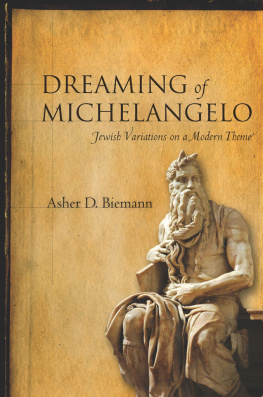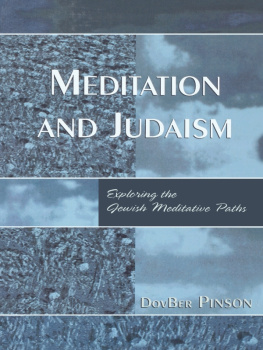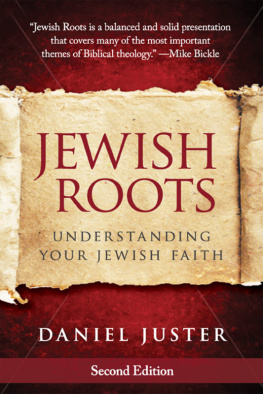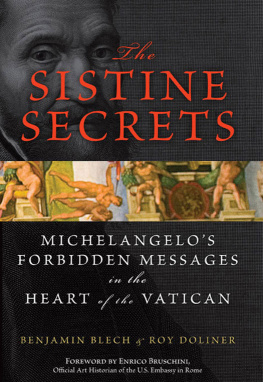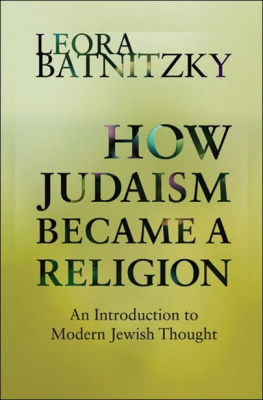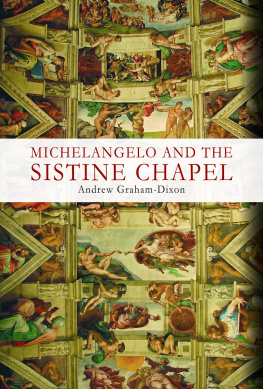DREAMING OF MICHELANGELO
Jewish Variations on a Modern Theme
Asher D. Biemann
STANFORD UNIVERSITY PRESS
STANFORD, CALIFORNIA
Stanford University Press
Stanford, California
2012 by the Board of Trustees of the Leland Stanford Junior University.
All rights reserved.
Printed with assistance from the College of Arts and Sciences, University of Virginia.
Parts of Chapter One appeared in Christian Wiese, Martin Urban (eds.), German Jewish Thought. Studia Judaica 60 (Berlin: Walter deGruyter, 2012). With kind permission of Walter deGruyter.
Parts of appeared in Images: A Journal for Jewish Art and Visual Culture 2:2008. With kind permission of Koninklije Brill, N.V.
No part of this book may be reproduced or transmitted in any form or by any means, electronic or mechanical, including photocopying and recording, or in any information storage or retrieval system without the prior written permission of Stanford University Press.
Printed in the United States of America on acid-free, archival-quality paper
Library of Congress Cataloging-in-Publication Data
Biemann, Asher D., author.
Dreaming of Michelangelo : Jewish variations on a modern theme / Asher D. Biemann.
p. cm.
Includes bibliographical references and index.
ISBN 978-0-8047-6881-8 (cloth : alk. paper)
ISBN 978-0-8047-6882-5 (pbk. : alk. paper)
ISBN 978-0-8047-8436-8 (e-book)
1. JewsGermanyIntellectual life19th century. 2. JewsGermanyIntellectual life20th century. 3. Jewish aestheticsGermanyHistory19th century. 4. Jewish aestheticsGermanyHistory20th century. 5. Michelangelo Buonarroti, 14751564AppreciationGermanyHistory19th century. 6. Michelangelo Buonarroti, 14751564AppreciationGermanyHistory20th century. I. Title.
DS134.25.B53 2012
305.892'404309034dc23
2012010488
To my sister
always dreaming of Rome
Contents
Prefatory Note
The dream is the reawakening of the interminable.
Maurice Blanchot, The Space of Literature
Michelangelo matters. In a recent essay for Commentary, the Renaissance scholar Theodore K. Rabb made this passionate point, explaining Michelangelos significance to our age. The present book is an exploration into why Michelangelo matters to modern Jewish thought. It encompasses the period from the early nineteenth to the early twentieth centuries, focusing, with some exceptions, on the German Jewish cultural context; but it is not, by any means, a book about Michelangelo. What is before you, rather, is an essay about Jewish imagination, about Jewish dreaming and dream work, about Jewish affinities and self-expression. It is a book primarily about German Judaism looking beyond German Judaism, an inquiry into elective affinity and cultural love as forms of self-creation. Thus, even if inspired by the Jewish reception of Michelangelos works, this study is no reception history in the strict sense of the term. In fact, reception may not even be the correct concept for what this book seeks to accomplish. It is not the Jewish reception of Michelangelo that interests me but the Jewish confrontation: Not the response, but the calling forth.
Nor is this book, despite its intimate conversation with culture, a cultural history. Culture, that vast receptacle of Jewish reorientation in the modern period, can act only as a transitory concept for our study, a concept that thought needs to traverse, work through, in order to arrive at itself. Indeed, Jewish culture and material identity are often portrayed in opposition to practices of Jewish thought, while the history of thought and ideas has fallen, in recent times, into disrepute. I have no intention of rehabilitating intellectual history as a history merely of ideas. But I see, for the purpose of this books argument, culture and material identity as leading into thought; I see thought as emerging from the encounter with the material world, from taking on its own materiality; I see ideas in their impure forms.
Nor, for that matter, is the present study a history of art. Art history is its own discipline, to which Dreaming of Michelangelo could not claim to belong. If I write of art, then it is only through the screen of literature, through self-reflections of the beholders. Thus, the subject of Jewish artists inspired by and responding to the works of Michelangelo, which, if it is not a matter of mere influence, must itself be a substantial field of inquiry, did not enter this study, for it would require the turn to another discipline, another discourse and, most likely, a study of its own.
Nor, finally, can this study measure up to the otherwise cognate field of German literature and culture. To be sure, its historical backdrop is German Judaism and its material is borrowed from the wells of German and German Jewish literature. Yet, it is not true to a particularly German angle, nor can it aspire to accomplish what a good Germanist would undoubtedly achieve: an encompassing digest of German Jewish literary reflection on the Italian experience and its fascination with Michelangelo. Indeed, what I can offer is but a truncated version of a phenomenon, which, to any student of modern German literature, was far more pervasive than these pages can possibly convey. Franz Kafkas travel diaries between 1910 and 1912, Karl Wolfskehls letters from his Italian exile between 1933 and 1938, Rudolf Borchardts vignettes on Italian cities, or Walter Benjamins Italian journey of 1912 are only a few of the canonical texts the student of modern German literature could not afford to miss. But this study is less concerned with canons than with exemplary patterns. It acknowledges no more than that there existed, as we shall see, a Jewish tradition of Italy travel, just as there existed a similar German tradition, reading texts only as they exemplify, epitomize, and variegate the origins and meanings of that tradition. Thus, like any synthetic book, Dreaming of Michelangelo is driven into the dilemma of omission, into an economy of texts, which reveals, in turn, the direction of its argument; a direction that cuts through literature, as it cuts through culture, without lingering where other disciplines must offer a fuller account. Italy may be this books context and Michelangelo its text, but they are not its proper theme. I write as little about literature as I write about art.
What sort of study, then, is the present book? For a generation of interdisciplinary scholars, such a question may sound moot, if not indecent. As the boundaries of disciplines vanish, so does our apperception of the historical world. We speak today of borderlands, periphery, junctions, and hybridity to capture this new historical complexity.
But it is not merely the attentiveness to theorya given, surely, to most historians todaythat determines the intellectual historians craft. Ideas or, as Dominick LaCapra writes, texts in a broader sense do not only emerge from contexts but are able to reshape them, to rethink, even disorient them. Because ideas themselves are never uttered in indicative speech but always in a subjunctive responding to reality and putting into question, the intellectual historian cannot reconstruct them as past events but only through their continuous interillumination (Bakhtin). Thus ideas cannot have an afterlife in the strict sense; nor can they be explained from the context of the intellectual alone. Rather, they are, as dialogues and contestations, always re-created and renewed. But this renewal also means that intellectual history is a discipline whose method is always reshaped by its own subject. Thought, ideas, texts, participate in their historical reiteration, and intellectual history is, in this respect, thought self-aware of its own genealogy.
Next page
